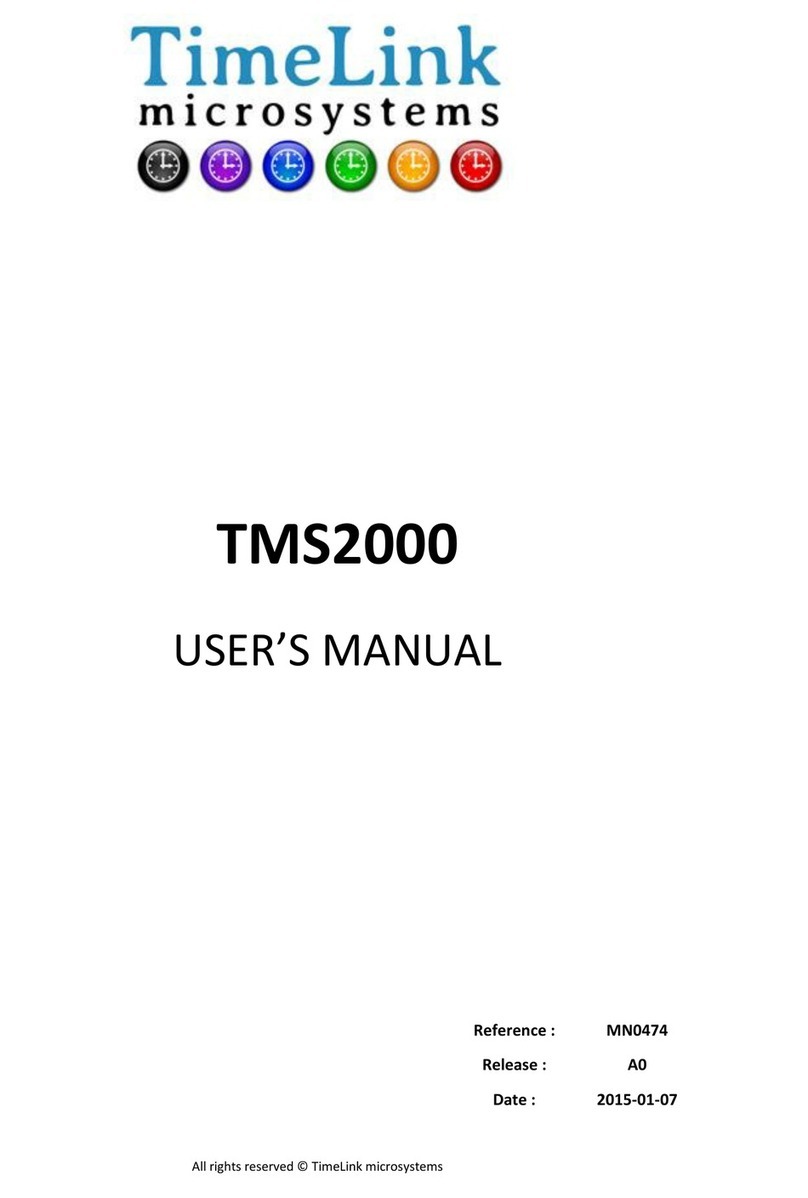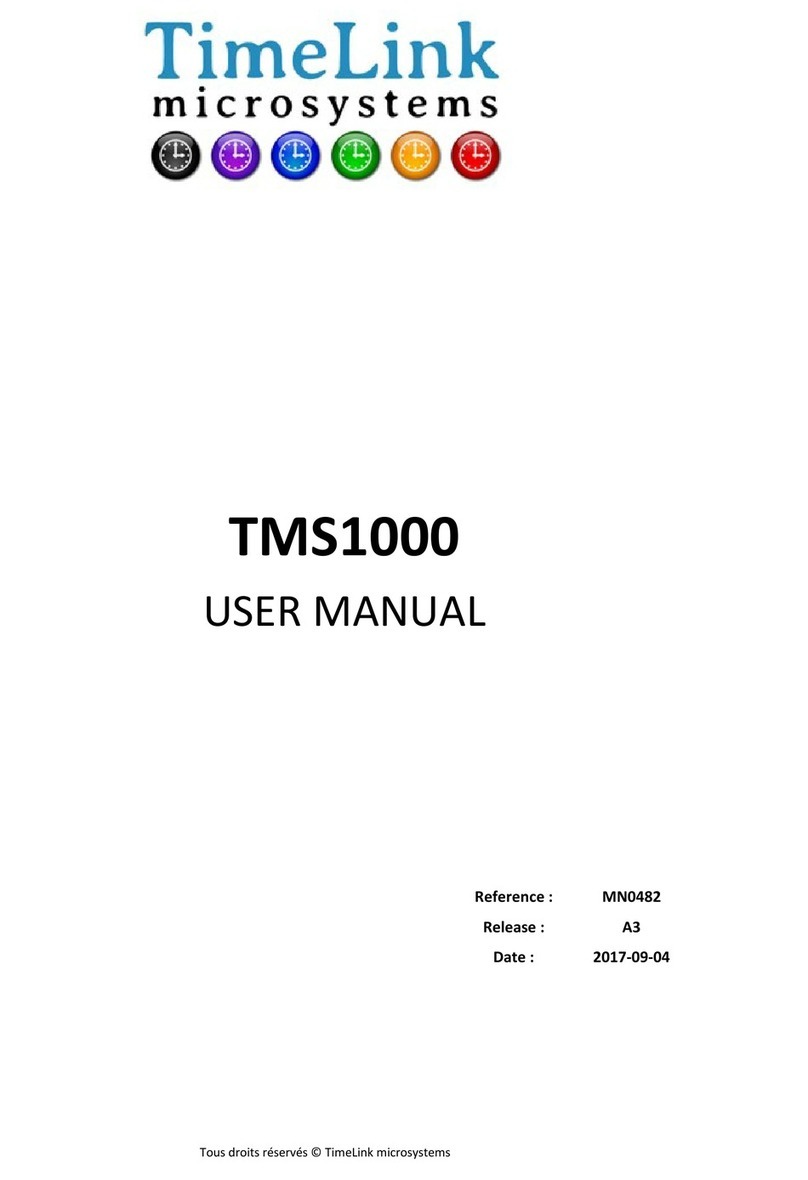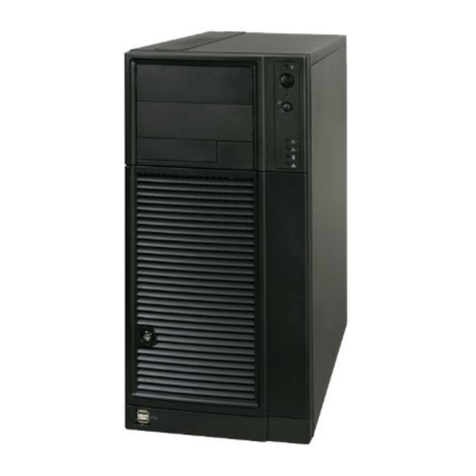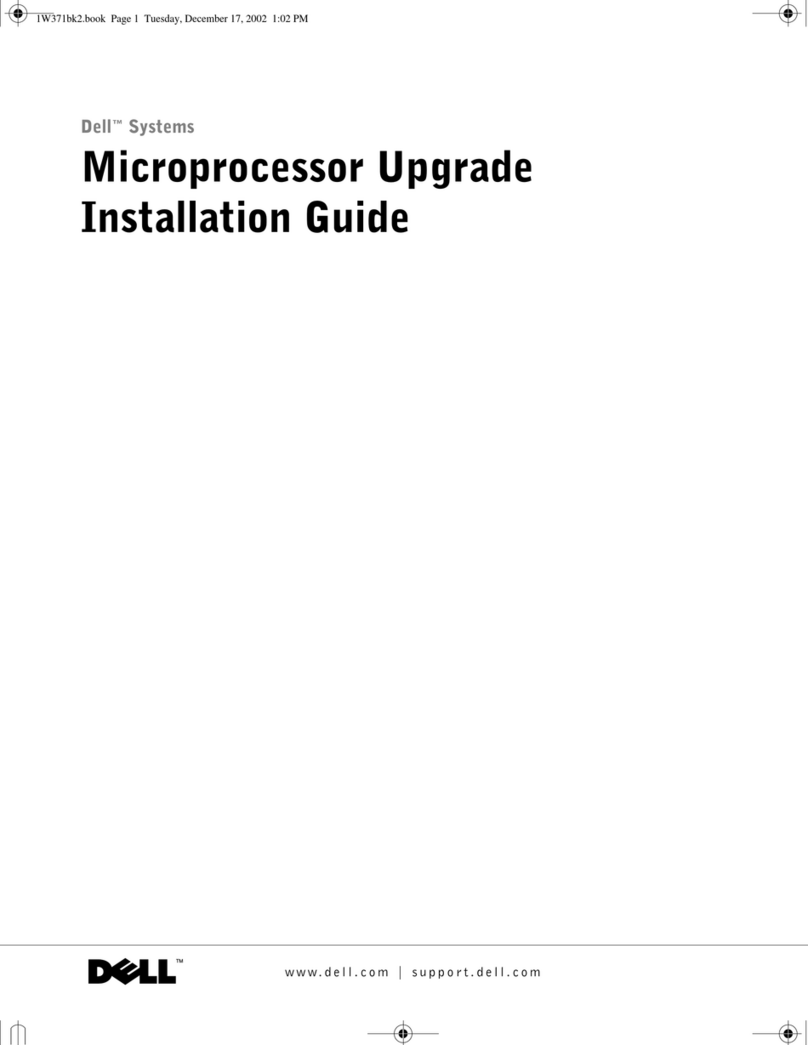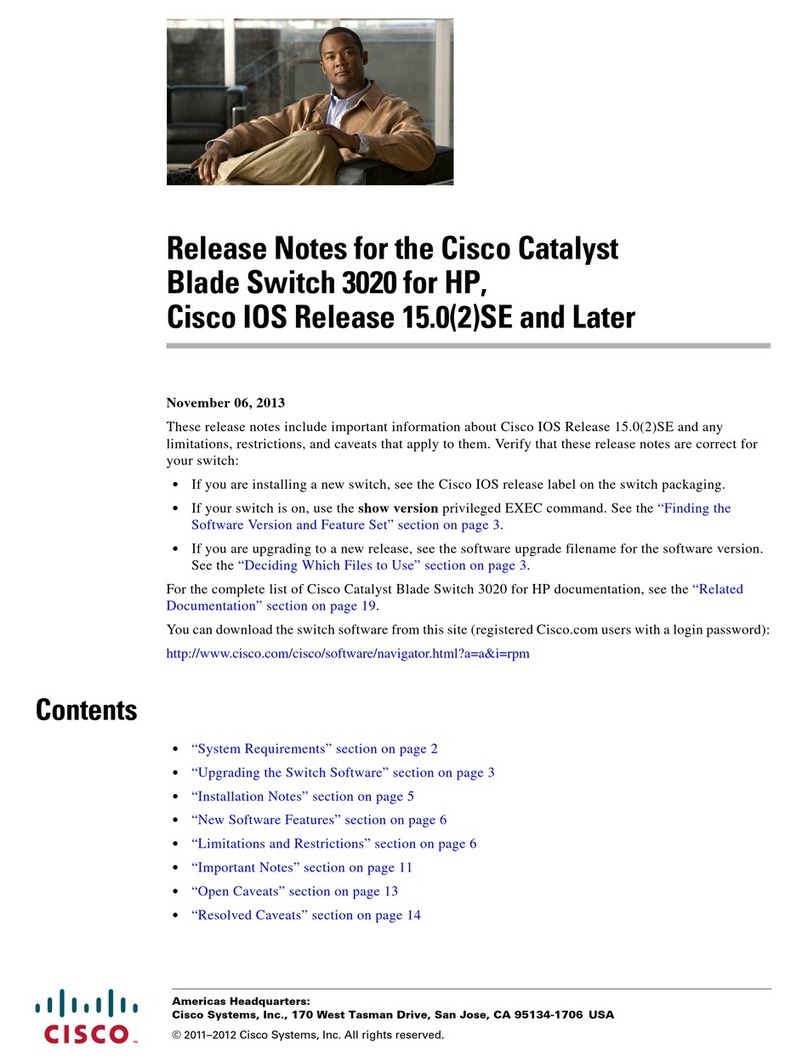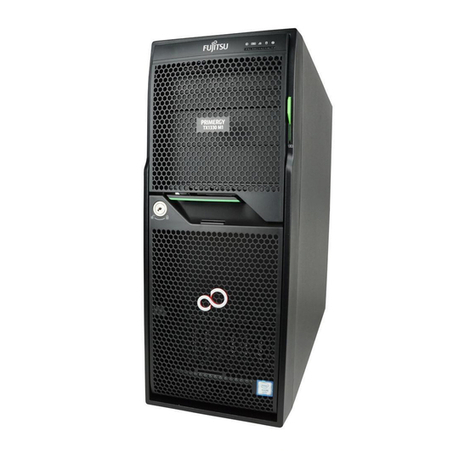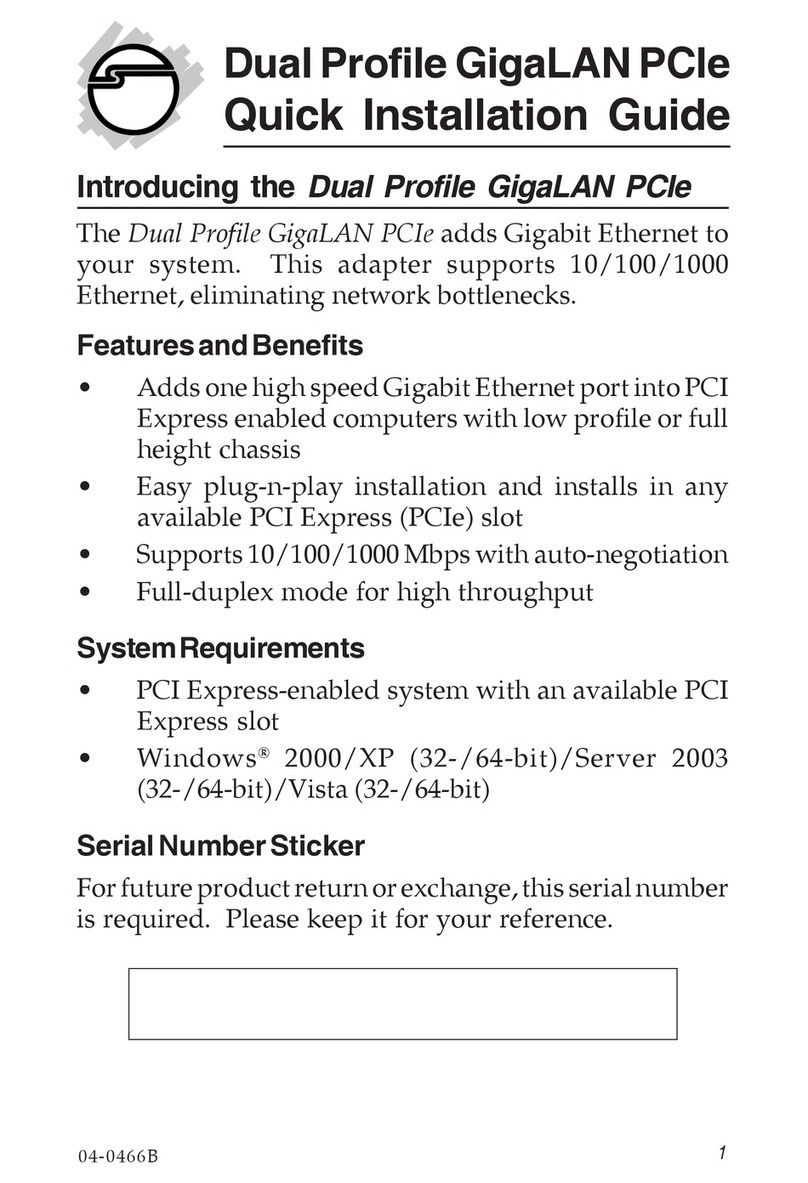TimeLink TMS6002 User manual

Tous droits réservés © TimeLink microsystems
TMS6002
USER MANUAL
Reference :
MN06127
Issue : A1
Date : 2019-03-27

TMS6002
USER MANUAL
Ref :
MN06 27 Date :
20 9-03-27
Issue :
A Page:
2/ 8
Tous droits réservés © TimeLink microsystems
Version chan e
Issue Date Description
A 20 9-03-27 Original issue

TMS6002
USER MANUAL
Ref :
MN06 27 Date :
20 9-03-27
Issue :
A Page:
3/ 8
Tous droits réservés © TimeLink microsystems
TABLE OF CONTENT
1. GENERAL DESCRIPTION 3
. . FRONT AND BACK PANEL ............................................................................................................................. 4
.2. DETAILED CHARACTERISTICS ....................................................................................................................... 5
.3. PHYSICAL CHARACTERISTICS ........................................................................................................................ 5
2. TMS6002 SETUP 5
2. . PHYSICAL INSTALLATION OF EQUIPMENT ................................................................................................... 6
2.2. CONNECTIONS ............................................................................................................................................. 6
2.3. CONFIGURATION ......................................................................................................................................... 6
2.3. . General settings ..................................................................................................................................... 6
2.3.2. Dedicated NTP settings .......................................................................................................................... 8
3. HOW TO GET STARTED 9
3. . POWERING-UP ............................................................................................................................................. 9
3.2. LEDS 9
3.3. SCREENS..................................................................................................................................................... 0
3.3. . MAIN SCREEN ...................................................................................................................................... 0
3.3.2. ALARMS SCREEN ..................................................................................................................................
3.3.3. SOURCE SCREEN ..................................................................................................................................
3.3.3. . GNSS SCREEN ...........................................................................................
3.3.3. . IRIGB SCREEN ........................................................................................... 2
3.3.4. OSCILLATOR SCREEN ............................................................................................................................ 2
3.3.5. EQUIPMENT INFORMATION SCREEN ................................................................................................... 3
3.4. SSH ACCESS ................................................................................................................................................ 3
3.4. . CHANGE PASSWORD ............................................................................................................................ 3
3.4.2. RESTART OR STOP THE EQUIPMENT .................................................................................................... 4
3.4.3. CHANGE TO USER 'root' ....................................................................................................................... 4
3.5. SERIAL CONSOLE ACCESS ........................................................................................................................... 4
4. MONITORING 14
4. . Http server ................................................................................................................................................. 4
4.2. SNMP MONITORING .................................................................................................................................. 5
5. MAINTENANCE 16
5. . SOFTWARE UPDATE ................................................................................................................................... 6
5.2. CONFIGURATION FILE UPDATE CONFIGURATION ..................................................................................... 6
5.2. . EDITING USING REMOTE ACCESS ......................................................................................................... 6
5.2.2. EDITING USING A PC ............................................................................................................................ 6
5.3. TROUBLESHOOTING AND ALARMS MESSAGES ......................................................................................... 6
GENERAL DESCRIPTION

TMS6002
USER MANUAL
Ref :
MN06 27 Date :
20 9-03-27
Issue :
A Page:
4/ 8
Tous droits réservés © TimeLink microsystems
TMS6002 is a multi-source (IRIGB or GNSS) disciplined NTP time server. It also generates a PPS output.
The equipment can be used with one source only, it is preferable to disable the unused source in that case in
order not to get the corresponding Alarms.
It can also be used with several sources with a priority selection amongst them. The equipment will
automatically switch from one to the other source if the current source is not usable anymore.
1.1. FRONT AND BACK PANEL
The front panel of the device has a high contrast LCD display with two lines of 40 characters, three color LED
indicators and a simplified 6 buttons keypad for navigation between the different screens.
Fi ure 1 – Front panel
The back panel of the equipment groups all connectors for connections to the environment :
•GNSS TNC type connector
•SD card connector
•RJ45 NTP network
•USB console
•BNC PPS signal
•BNC IRIGB IN connector
Figure 2 – Back panel

TMS6002
USER MANUAL
Ref :
MN06 27 Date :
20 9-03-27
Issue :
A Page:
5/ 8
Tous droits réservés © TimeLink microsystems
1.2. DETAILED CHARACTERISTICS
Characteristics Types / Value
PPS output Level: 0-5V, positive pulse, 50 Ohms
Female BNC connector – named " PPS"
Duration: 20us, Hz period, rising edge
IRIG-B Analog IRIGB (modulation :3/ : , level 0 to 8V peak to peak - 600 Ω)
Female BNC connector
GNSS Integrated GNSS (GPS and GLONASS) module
TNC connector for active antenna - 5V or 3.3V power supplied by the GPS
module
SD card "Push-push" connector on the back of the equipment - Identification "SD
CARD"
Power supply input(s) CEE 2P+E socket with integrated filter and ON/OFF switch
Integrated back-up power supply
85 to 265V AV 47-60Hz
Consumption : < 0W at 230VAC/50 Hz
NTP Service RJ45 connector – named "LAN"
UDP port 23, request/answer operation (unicast)
00/ 000 Mbps Ethernet
Console USB connector, speed 5200 bauds, 8 data bits, stop bit
SNMP service SNMP v2c, V3 protocol
Tableau – functional specifications
1.3. PHYSICAL CHARACTERISTICS
The table below summarizes the physical characteristics of the equipment.
Characteristics Types/Values
Dimensions 9" rack (483 mm), U high (44 mm), 350 mm deep.
Weight 2.7 Kg (3.0 Kg with provided power cord).
Table 2 – Physical specifications
2. TMS6002 SETUP
Before using the equipment, it is necessary to perform the operations described below.

TMS6002
USER MANUAL
Ref :
MN06 27 Date :
20 9-03-27
Issue :
A Page:
6/ 8
Tous droits réservés © TimeLink microsystems
2.1. PHYSICAL INSTALLATION OF EQUIPMENT
The equipment is intended to be installed into a 9" cabinet. It is recommended to connect the equipment to
the protective ground of the cabinet via the ground stud on the left rear of the equipment.
2.2. CONNECTIONS
The following connections must to be made:
•Connect the equipment to the AC power via the supplied AC cord.
•Connect the mechanical chassis ground to the cabinet ground.
•Connect the GNSS antenna cable to the antenna input of the equipment.
•Connect the equipment to the remote management network ("LAN" connector) with a RJ45 network
cable.
Important: Power the equipment only after all connections have been made.
2.3. CONFIGURATION
The proper functioning of the equipment requires setting the configuration parameters with consistent values.
These settings are located on an SD card inserted in the back of the equipment.
The parameters available to the user are located in the 'user.ini' file. When inserted into a PC, the 'user.ini' file
is located in the 'TMS6002' directory of the SD card. On the equipment, this file is located in the '/confi '
directory.
The following table lists the parameters according to their location in the configuration space. The procedure to
change the settings is described in the maintenance chapter of this document.
Important: Please do not modify files other than those listed below under penalty of breaking the equipment’s
operation, except if the support staff of Timelink microsystems invites you to do so.
2.3.1. Gener l settings
These settings are located in the'TMS6002/user.ini' file of the SDCARD.
Only the parameters listed below can be modified, contact TIMELINK for other needs.

TMS6002
USER MANUAL
Ref :
MN06 27 Date :
20 9-03-27
Issue :
A Page:
7/ 8
Tous droits réservés © TimeLink microsystems
Section [IP_eth0]
Name Description Availability Default value Accepted values
Ip IP V4 address of the
equipment
Mandatory 92. 68. 0. 90 Any compliant IP V4
address
mask Subnet mask of the
network on which the
equipment is connected
Mandatory 255.255.255.0 Any compliant subnet
mask
gateway IP V4 address of the
default gateway
Optional but
recommended
92. 68. 0.254 Any compliant IP V4
address
nameserver IP V4 address of the name
server
Optional 8.8.8.8 Any compliant IP V4
address
[SOURCE_PRIORITIES] Section
Name Description Availability Default value Accepted values
GNSS Select the priority of the
source compare to the
others. is highest priority
Mandatory ,2,3
IRIGB_IN Select the priority of the
source compare to the
others. is highest priority
Mandatory 2 ,2,3
LOCAL Select the priority of the
source compare to the
others. is highest priority
Mandatory 3 ,2,3
[GNSS] Section
Name Description Availability Default value Accepted values
PRESENCE Enable/disable the GNSS
source.
Mandatory Y Y, N
UTC_OFFSET Offset between GPS and
UTC time in second
Mandatory 8 Number
MOBILE Enable the GNSS mobile
receiver mode
Mandatory Y Y or N
LEAP_MODE Set the way the UTC offset
update is managed.
LEGACY: the parameter
UTC_OFFSET described
above is prioritized and
when different from the
one propagated by GNSS,
an alarm is triggered.
Manual acknowledgement
is then necessary to switch
to the GNSS parameter.
AUTOMATIC: as soon as
available the UTC offset
Mandatory AUTOMATIC LEGACY or
AUTOMATIC

TMS6002
USER MANUAL
Ref :
MN06 27 Date :
20 9-03-27
Issue :
A Page:
8/ 8
Tous droits réservés © TimeLink microsystems
Name Description Availability Default value Accepted values
propagated by GNSS is
used and the value
described above is
updated accordingly
automatically.
PASSIVE_ANT
ENNA
Select active or passive
antenna
Mandatory N Y or N
GPS Enable or disable GPS
constellation. Only 2
constellations can be
activated.
Mandatory Y Y or N
GALILEO Enable or disable GALILEO
constellation. Only 2
constellations can be
activated.
Mandatory Y Y or N
GLONASS Enable or disable
GLONASS constellation.
Only 2 constellations can
be activated.
Mandatory N Y or N
BEIDOU Enable or disable BEIDOU
constellation. Only 2
constellations can be
activated.
Mandatory N Y or N
Note : any change to the default constellation must be followed by a Coldstart and a reboot.
[IRIGB_IN] Section
Name Description Availability Default value Accepted values
PRESENCE Enable/disable IRIGB
source.
Mandatory Y Y, N
YEAR Default year used when it
is not received
Mandatory 20 9 Current year
CODE Type of IRIGB code Mandatory B 22 B 22, B 26, 344
2.3.2. Dedic ted NTP settings
NTP authentication is managed using 3 files located on the SD card:
The file “/config/system/etc/ntp/keys” sets the keys to be used. Those keys must be shared
with the NTP client so that authentication can take place.
“keys” file example :
# Thu Apr 28 16:06:45 2016
1 MD5 12345678901234567890 # MD5 key

TMS6002
USER MANUAL
Ref :
MN06 27 Date :
20 9-03-27
Issue :
A Page:
9/ 8
Tous droits réservés © TimeLink microsystems
2 MD5 x$H;9MV>zXL7YEa%+T)x # MD5 key
3 MD5 $jHdPH(0S3Jm;A7 # MD5 key
The file “ /config/system/etc/ntp/trustedkeys” activates the keys
Example: within the following file, the 3 keys are activated
# Specify the key identifiers from /etc/ntp/keys which are trusted.
trustedkey 1 2 3
The file “/config/system/etc/ntp/restrict” define NTP server access rights for a subnet or a
machine.
Example:
restrict 192.168.10.0 mask 255.255.255.0 #authenticated or not
restrict 192.168.1.0 mask 255.255.255.0 notrust #authenticated
restrict 192.168.1.1 mask 255.255.255.255 notrust #authenticated
3. HOW TO GET STARTED
3.1. POWERING-UP
The equipment power-up when the power is applied to the unit and the ON/OFF switch is turned ON.
3.2. LEDS
On the front panel a group of three colored LED indicates the status of the system. These indicators and their
meanings are described in the table below.
LED Color Description
ON Off At system start-up
Green Equipment is powered up.
Blinking
Green
Equipment is locked on current screen.
ALARMS Off At system start-up
Red At least one ERROR criticality alarm is present
Orange At least one WARNING and no ERROR is present
Green Equipment operates normally.
Alarms of type INFO can though be present
SYNC Red The internal time has not been set yet
Orange The equipment is no more synchronized
Green The equipment is synchronized and disciplined on the GNSS source
Tableau 3 – Status LEDs

TMS6002
USER MANUAL
Ref :
MN06 27 Date :
20 9-03-27
Issue :
A Page:
0/ 8
Tous droits réservés © TimeLink microsystems
3.3. SCREENS
The display is composed of several screens on which the navigation is done by using the up and down arrow
keys. The default screen is displayed again after 5 seconds without action on the up or down arrows.
Nevertheless, it is possible to lock the display on the current screen by pressing the green button.
No configuration changes can be made from the screens displayed.
The following sections describe the contents of screens.
3.3.1. MAIN SCREEN
This screen is displayed as the default screen. It provides a synthesis of the operation of the equipment.
The displayed information is the following:
•current UTC date and time
•name of the selected time source (GNSS or LOCAL)
•quality of the generated time
•quality of the frequency stability
Time 2014-04-25 12:00:00 UTC Freq
▌▌▌▌▌ Synced to source GPS ▌▌▌▌
Screen sample
The quality indicators are made of 0 to 5 bars.
Time indicator:
Bars Precision (GNSS) Equipment state
0 > 0µs Indicates a problem in steady
state.
(Normal during startup)
µs to 0µs
2 500ns to µs
3 00ns to 500ns
Operating 4 50ns to 00ns
5 < 50ns
Precision is an image of the phase difference between the internal generated PPS and the PPS of the time
source.
Frequency indicator:
Bars Equipment state
0 Indicates a problem in steady
state.
(Normal during startup)
2
3
Operating
4
5

TMS6002
USER MANUAL
Ref :
MN06 27 Date :
20 9-03-27
Issue :
A Page:
/ 8
Tous droits réservés © TimeLink microsystems
•A press on the green button allows to setup a manual time. Use up and down arrows to change the
values and right and left arrows to browse through the menu. Press green button to validate the time
(red button to cancel). If no other source is available the setup time will be maintained otherwise it
will be changed by the source time.
3.3.2. ALARMS SCREEN
This screen displays the current alarms. The following screen is displayed when there is no alarm.
Alarms NONE
Sample screen with no alarm
The following screen gives an example of the presence of an alarm raised when no GNSS antenna is connected.
Alarm [ERROR] '1201' x 1 1/1
GNSS antenna not connected
Sample screen with an alarm
When multiple alarms are up, the left and right arrow keys can be used to navigate around them. The number
of alarms is shown is the upper right corner with the syntax X/N where X is the X
th
alarm out of N total alarms.
It is possible to reset all current alarms by pressing the red key.
Note: if the alarm condition remains active, the alarm will appear again in the list.
3.3.3. SOURCE SCREEN
This screen gives information about the time source.
3.3.3.1. GNSS SCREEN
GNSS Doing fixes(Sat=X) UTC+18s
Pos: N043.55296 / E001.41670 / +0162m
Sample screen for GNSS time source
The first line gives information about the operation of the GNSS receiver. Possible modes are:
•doing fixes: GNSS operates nominally
•antenna not connected: the GNSS antenna is not connected
•antenna shorted: the GNSS antenna is short-circuited or not powered
•UTC Offsets mismatch: UTC offsets differ between configuration and GNNS
•not nominal: the GNSS does not operate nominally
•survey in progress (x%): the GNSS is establishing its position

TMS6002
USER MANUAL
Ref :
MN06 27 Date :
20 9-03-27
Issue :
A Page:
2/ 8
Tous droits réservés © TimeLink microsystems
The second line shows the position of the antenna connected to the equipment.
Available actions from this screen are:
•A long press on the red button excludes or includes the GNSS source into the list of available time
sources.
•A GNSS Coldstart is achieved by pressing successively red button, left arrow, left arrow, right arrow,
right arrow, green button. Once a cold start has been done, the equipment must be switched OFF and
ON.
3.3.3.1. IRIGB SCREEN
IRIG-B time is not available
Type: standard status : no signal
Sample screen for IRIGB time source (no signal in that case)
•A long press on the red button excludes or includes the IRIGB source into the list of available time
sources.
3.3.4. OSCILLATOR SCREEN
This screen gives information about
•the measurement of the phase differences between the internal PPS and the PPS of the time source
•the computed frequency stability estimator
Est. Stab.=+1.023e-11 PH/TR
PPS/GPS = +012ns
Sample screen of the oscillator
The first line gives the stability estimator, and the mode (here active PHASING/TRACKING).
The second line indicates the estimation of the phase difference between the internal generated PPS and the
PPS of the reference time source.
Est. Stab.=+1.023e-11 HEAT
PPS/GPS = +012ns 10s
Sample screen of the oscillator during the heating period
First line indicates that the oscillator is heating.
Second line indicates the remaining time for the end of heating.

TMS6002
USER MANUAL
Ref :
MN06 27 Date :
20 9-03-27
Issue :
A Page:
3/ 8
Tous droits réservés © TimeLink microsystems
3.3.5. EQUIPMENT INFORMATION SCREEN
It shows the equipment type and the software version running.
MSXXX is the equipment type.
LOXXX and ATXXX are the embedded software versions.
www.timelinkmicro.com TMS6002
MSXXXX LOXXXX XLXXXXX
Sample screen for equipment information
•A press on the right arrow allow to check the embedded firmware version.
3.4. SSH ACCESS
This service enables access to a remote device in secured mode. The server can be accessed through SSH from
the network it is connected to.
Only the 'maintenance' user is authorized to connect to the equipment. After a successful connection, a shell is
opened. The user must take care of its actions as they can result in the equipment no longer being able to serve
its primary functions.
The possible actions executable from this shell are the following:
•update the software
•modify the password of a user
•restart or stop the equipment
•connect as 'root'
The default password for both accounts is 'timelink'.
3.4.1. CHANGE PASSWORD
To change the password for a user, use the command 'passwd <user>'. The system will ask for the new
password and it will be written in encrypted format in a file on the SD card.
Note : When user maintenance changes its password, it must comply with the following rules:
•At least 8 characters long
•Contains at least 3 of the following: a lower case letter (a-z), an upper case letter (A-Z), a digit (0-9), a
special character ($,@,…)
•The new password must differ from the current one
•The password must not be the equipment’s host name (even with character permutations of different
cases).
The password is rejected if it lacks compliance with any of those rules.
For the root user, a warning is printed if those rules are not complied with, but the password is changed
anyway.
Note : After modifying a password, or any other system or application parameter, the SD card digital signature
must be updated (cf. § 6. ) before rebooting the equipment. In case it weren’t done, the equipment wouldn’t
start.

TMS6002
USER MANUAL
Ref :
MN06 27 Date :
20 9-03-27
Issue :
A Page:
4/ 8
Tous droits réservés © TimeLink microsystems
3.4.2. RESTART OR STOP THE EQUIPMENT
These functions allows for securely restart or stop the equipment. The user must first log in as 'root'.
To restart, use the 'reboot' command; to stop, use 'poweroff'.
After executing 'poweroff' the command the equipment can be switched off.
3.4.3. CHANGE TO USER 'root'
This function allows a user to change its identity to 'root'.
To do this, type '/tools/su' and enter the 'root' password.
3.5. SERIAL CONSOLE ACCESS
Access to the system can also be made from the Console port by connecting a terminal emulator software. Use
the following parameters:
•baud rate 5200
•8 bits, stop bit, no parity
After logging in with the login/password used to gain SSH access, a shell is opened. The same commands as
those described in 3.4 can be issued.
4. MONITORING
4.1. Http server
The http interface is a remote control of the equipment; The integrated http server uses port 80.
The following screenshots give a preview of the pages as they appear in a browser:

TMS6002
USER MANUAL
Ref :
MN06 27 Date :
20 9-03-27
Issue :
A Page:
5/ 8
Tous droits réservés © TimeLink microsystems
The top section is an active remote management of the front face and allows browsing through the equipment
menu remotely.
Long press is replaced by “CTRL” and button click.
•The top left part allows checking and controlling the equipment.
•The oscillator section provides information on the stability accuracy.
•The Time sources section provides control over the available time sources as shown below
A right click on the source allows excluding or including the selected source.
4.2. SNMP MONITORING
The monitoring of the equipment can be made using the SNMP v2c protocol. See the provided MIB file for
complete description of the information that can be monitored.
The community configuration is located in the file '/config/etc/snmp/snmpd.conf'. The default
name for read-only is 'public' and read-write is ‘private’.
The MIB root OID is: 1.3.6.1.4.22641.100.
Active
control
Display adjusts to arrow
selection on the right

TMS6002
USER MANUAL
Ref :
MN06 27 Date :
20 9-03-27
Issue :
A Page:
6/ 8
Tous droits réservés © TimeLink microsystems
5. MAINTENANCE
5.1. SOFTWARE UPDATE
The software update is automatically done by changing the content of the SD card.
5.2. CONFIGURATION FILE UPDATE CONFIGURATION
The configuration files can be modified:
•Either through a remote access
•Or using a PC and a SD card reader.
5.2.1. EDITING USING REMOTE ACCESS
First, log in from a Console or SSH.
Once connected, use the 'vi' editor provided in the equipment.
Type 'vi /config/user.ini', modify the values, save the file and exit from the editor.
Once the modification of the file has been done, restart the equipment by typing 'reboot' for the new values to
take effect.
5.2.2. EDITING USING A PC
Before file modification, stop the equipment, remove the SD card and insert it in the SD card reader of a PC.
Use a text editor to modify the 'user.ini' file. The SD card can then be located back into the equipment which
needs to be powered-on.
Important note:
Depending on the used text editor, verify than the encoding of the end of lines are in the UNIX format (only LF)
and not in the WINDOWS format (CR + LF). A bad encoding will lead to an unreadable file in the equipment.
Text editor 'Notepad++' is a good choice for updating configuration files
5.3. TROUBLESHOOTING AND ALARMS MESSAGES
The possible alarm codes are the following:
0001: Error decoding IRIGB signal.
0002: Wrong IRIGB signal received. Check that the IRIG-B code received is consistent with the expected code.
0003: No signal on IRIG-N input.
1100: check that the UTC_OFFSET value of the [GPS] section has the same value as the displayed one. If they
differ edit the 'user.ini' file to write the new value.
1201: the GNSS antenna is not connected
1202: the GNSS antenna is short-circuited or not powered
1207: GNSS survey is in progress
1208: GNSS leap second is pending

TMS6002
USER MANUAL
Ref :
MN06 27 Date :
20 9-03-27
Issue :
A Page:
7/ 8
Tous droits réservés © TimeLink microsystems
3102: GNSS time is different from internal

TMS6002
USER MANUAL
Ref :
MN06 27 Date :
20 9-03-27
Issue :
A Page:
8/ 8
Tous droits réservés © TimeLink microsystems
*** Fin du document ***
This manual suits for next models
1
Table of contents
Other TimeLink Server manuals
Popular Server manuals by other brands
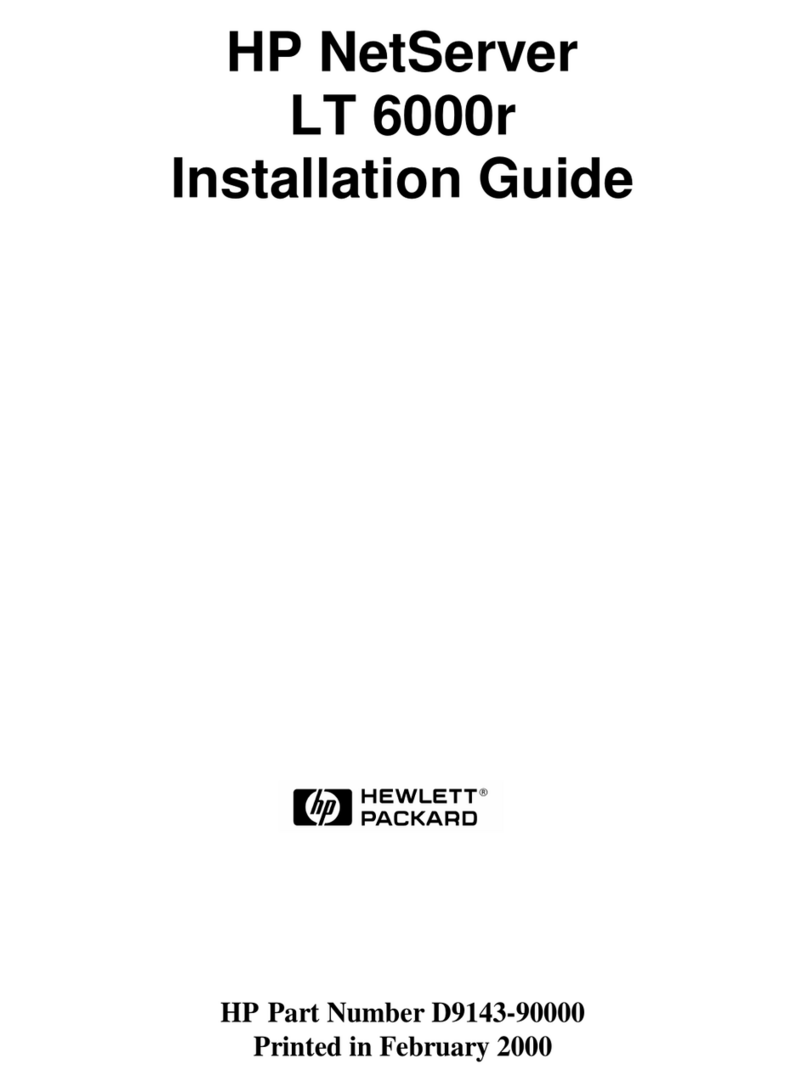
HP
HP D7171A - NetServer - LPr installation guide
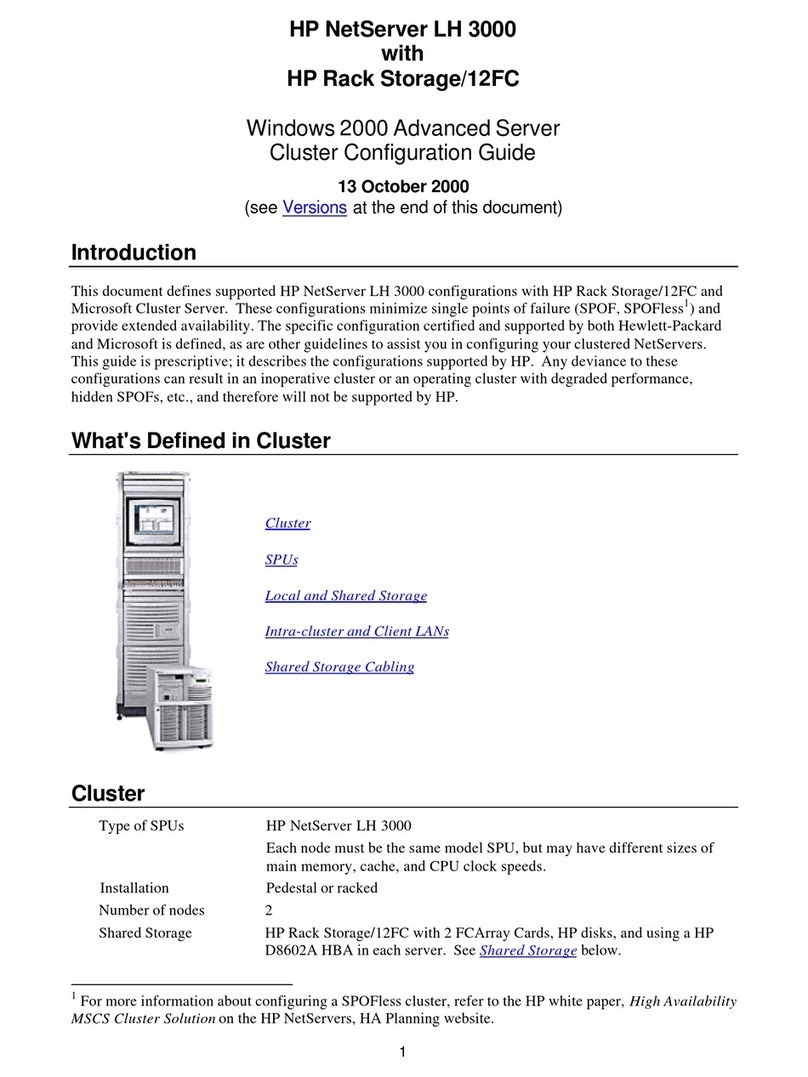
HP
HP D7171A - NetServer - LPr Configuration guide

ICP DAS USA
ICP DAS USA PPDS-700-MTCP Series quick start guide
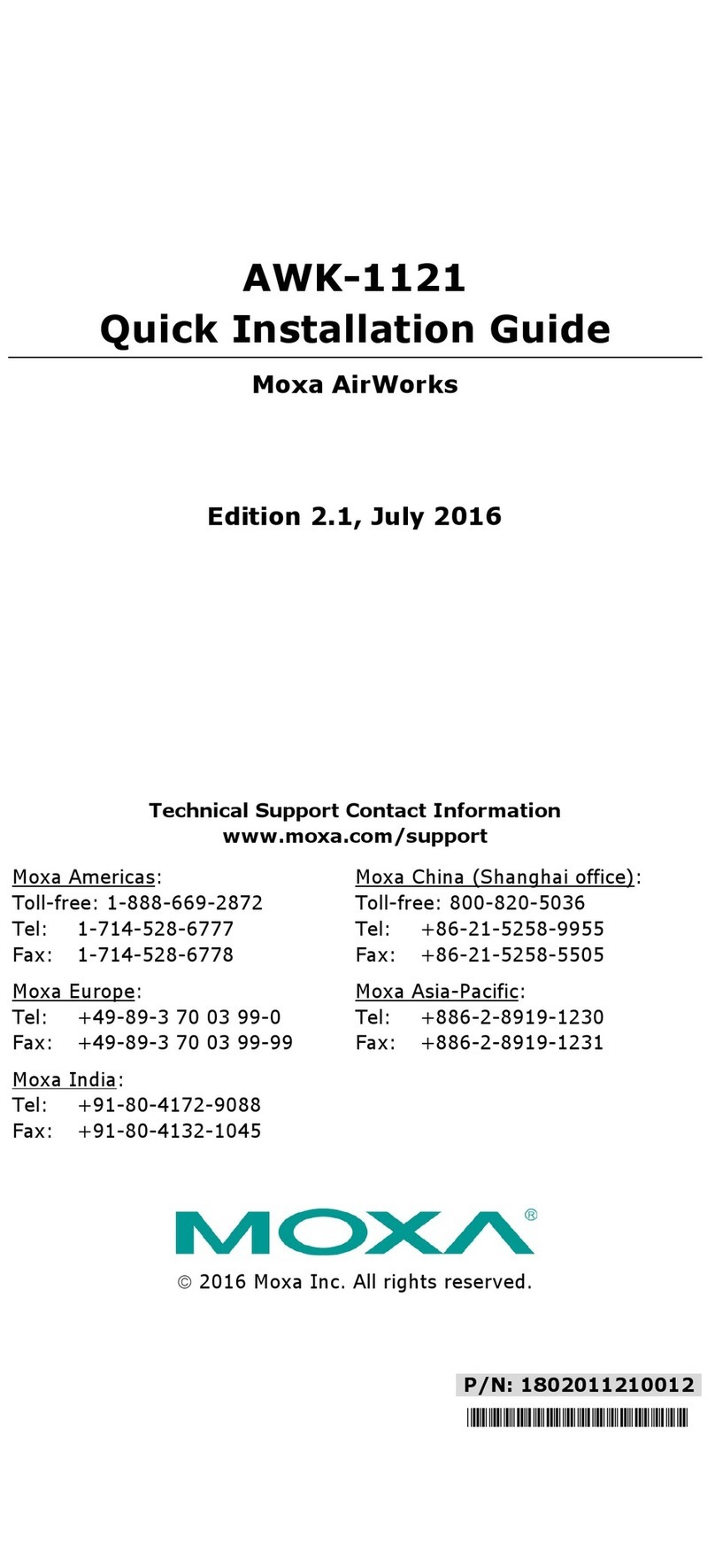
Moxa Technologies
Moxa Technologies AWK-1121 Quick installation guide
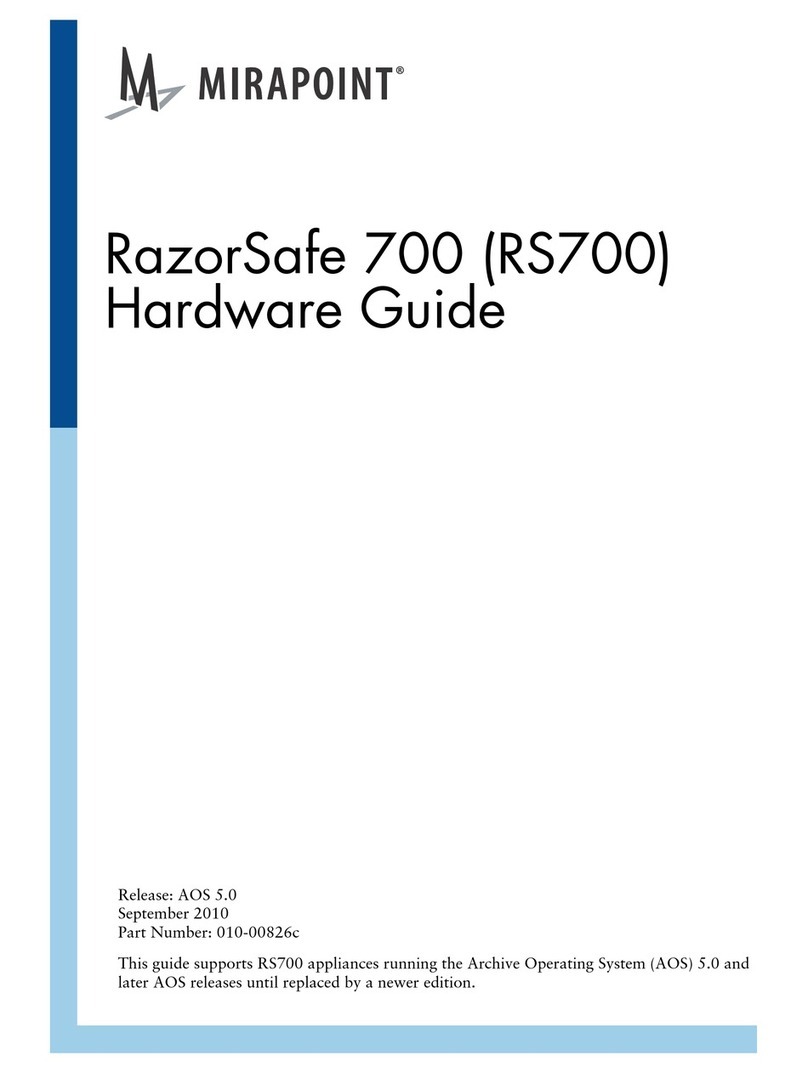
Mirapoint
Mirapoint RazorSafe 700 Hardware guide
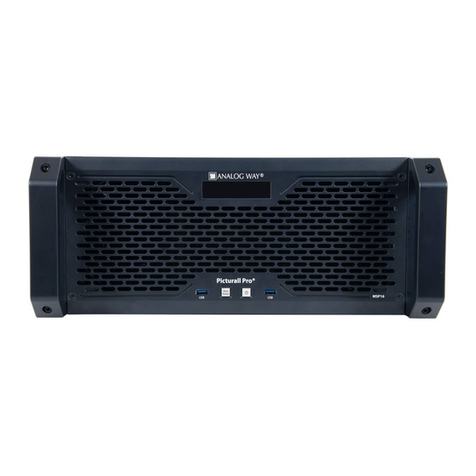
Analog way
Analog way Picturall Series user manual
